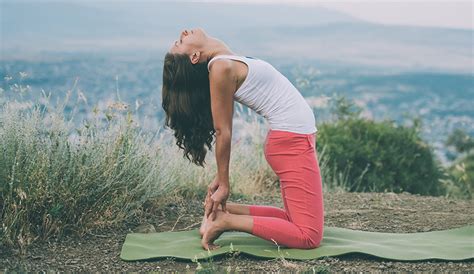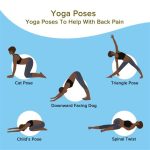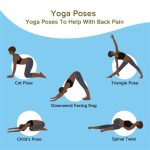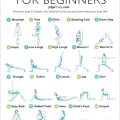Essential Yoga Pose Modifications for Back Pain: What to Avoid and Alternatives
Yoga is often recommended to alleviate back pain, but some poses may do more harm than good, especially if not performed with proper alignment or awareness of existing pain. In this comprehensive guide, we’ll explore key yoga poses to avoid if you suffer from back pain, offer safer alternatives, and provide actionable tips for a pain-free practice. Whether you’re a beginner or an experienced yogi, it’s crucial to modify your practice to support, not strain, your back.
Introduction: The Delicate Balance of Yoga and Back Pain
Back pain is one of the most common health complaints globally, affecting people of all ages. Yoga, known for its ability to promote flexibility, strength, and relaxation, seems like an ideal solution. However, not all yoga poses are created equal when it comes to protecting your back. Some poses, especially those involving deep twists, backbends, or forward folds, can exacerbate pre-existing conditions and lead to further discomfort.
In this article, we will discuss key yoga poses to avoid if you have back pain and the modifications you can make to safely enjoy your practice. We’ll provide evidence-based guidance on how to protect your spine and promote healing, drawing insights from physical therapists, yoga instructors, and medical professionals.
Key Concepts: Understanding Back Pain and Yoga
Before diving into specific poses to avoid, it’s important to understand why certain movements can trigger or worsen back pain. Below are some key concepts related to back pain and yoga:
- Herniated Discs: A condition where the cushioning between your vertebrae pushes out, causing pain and nerve irritation. Certain poses, especially deep forward folds, can aggravate this condition.
- Sciatica: Pain caused by irritation of the sciatic nerve, often felt in the lower back, buttocks, and legs. Twists and forward bends may worsen this condition.
- Muscle Strain: Overuse or poor posture can lead to muscle strains, making backbends and overly strenuous poses dangerous.
- Spinal Alignment: Misalignment of the spine during yoga can lead to unnecessary pressure on the vertebrae and cause pain.
By understanding these concepts, we can begin to see why certain yoga poses may need to be avoided or modified to prevent exacerbating back issues.
Historical Context: Yoga’s Evolution and Impact on Modern Health
Yoga has ancient roots dating back over 5,000 years in India, where it was primarily seen as a spiritual practice. However, the rise of modern yoga in the West has shifted the focus towards physical health benefits, including flexibility, strength, and stress relief.
As yoga gained popularity in the 20th century, its association with therapeutic benefits also grew. Yoga became widely recommended for various ailments, including back pain, though not all poses were designed with modern, sedentary lifestyles in mind. Western-style yoga often emphasizes physical postures (asanas) over the meditative and philosophical aspects, which can lead to overexertion or improper form—particularly problematic for those with back pain.
Current State Analysis: Common Yoga Poses to Avoid for Back Pain
While yoga can be beneficial for overall spinal health, certain poses can aggravate back pain. Below are some of the most common yoga poses that should be approached with caution or avoided altogether by individuals with back pain:
- Full Wheel Pose (Urdhva Dhanurasana): This deep backbend puts significant pressure on the lower back and can cause or worsen discomfort, especially for those with pre-existing conditions like herniated discs.
- Seated Forward Fold (Paschimottanasana): Deep forward bends can compress the lower spine, potentially worsening conditions like sciatica or disc issues.
- Cobra Pose (Bhujangasana): While a gentle cobra may feel good, overextending in this pose can exacerbate lumbar spine problems.
- Boat Pose (Navasana): This core-strengthening pose often leads to lower back rounding, which can strain muscles and worsen pain.
- Standing Forward Bend (Uttanasana): Similar to seated forward folds, this pose can cause strain on the lower back if the spine is rounded too much.
Alternatives and Modifications
For those with back pain, safer alternatives or modifications can help maintain the benefits of yoga while protecting the spine:
- Bridge Pose (Setu Bandhasana): A gentler backbend that supports spinal alignment without the strain of a full wheel pose.
- Supported Forward Fold: Use a bolster or blocks to reduce the intensity of forward bends and maintain a neutral spine.
- Sphinx Pose (Salamba Bhujangasana): A milder version of Cobra that helps strengthen the back with less extension.
- Knees-to-Chest Pose (Apanasana): A gentle release for the lower back, especially helpful for those with sciatica.
- Half Boat Pose: Instead of lifting both legs, keep one foot on the floor to reduce strain on the lower back.
Practical Applications: Tailoring Yoga for Back Pain Relief
Understanding how to adjust your yoga practice to accommodate back pain involves several key strategies:
- Use Props: Incorporate yoga blocks, straps, and bolsters to support your poses and ensure proper alignment.
- Engage Core Muscles: Strengthening the core is crucial for supporting the lower back during yoga. Focus on poses that promote core stability.
- Move Slowly: Slow transitions between poses can help prevent jerking or sudden movements that may strain the back.
- Focus on Alignment: Keep the spine neutral in all poses, avoiding excessive rounding or arching.
- Listen to Your Body: If a pose causes discomfort or pain, stop immediately and consult a healthcare professional or yoga therapist for guidance.
Case Studies: Real-World Examples of Yoga and Back Pain Management
| Case Study | Condition | Pose to Avoid | Recommended Modification |
|---|---|---|---|
| Case 1: Herniated Disc | Lumbar Herniation | Seated Forward Fold | Supported Forward Fold |
| Case 2: Sciatica | Sciatic Nerve Irritation | Full Wheel Pose | Bridge Pose |
| Case 3: Lower Back Strain | Muscle Strain | Boat Pose | Half Boat Pose |
Stakeholder Analysis: Who Benefits from a Modified Yoga Practice?
The individuals most affected by yoga-related back pain vary, from beginners to long-time practitioners with injuries. Here are some key stakeholders who benefit from modifications:
- Injured Practitioners: Those recovering from injuries or managing chronic conditions.
- Yoga Instructors: Teachers must be aware of how to modify poses to prevent harm to their students.
- Healthcare Providers: Physical therapists and doctors often recommend yoga but need confidence in its safety.
- Fitness Enthusiasts: Active individuals who integrate yoga into their workout regimen need a safe approach to prevent injury.
Implementation Guidelines: How to Practice Yoga Safely with Back Pain
To ensure a safe and effective yoga practice, consider the following guidelines:
- Consult a Professional: Always consult a healthcare provider before starting any yoga practice, especially if you have a pre-existing back condition.
- Work with a Certified Yoga Instructor: Find an instructor who specializes in back pain or therapeutic yoga to ensure proper alignment and modifications.
- Start Slow: Gradually increase the intensity of your practice to avoid exacerbating back issues.
- Focus on Core Strength: Strengthening your core helps support the spine and reduce back pain.
- Practice Mindfully: Pay close attention to how your body feels in each pose and avoid anything that causes discomfort.
Ethical Considerations: Promoting Safe Practices for All








